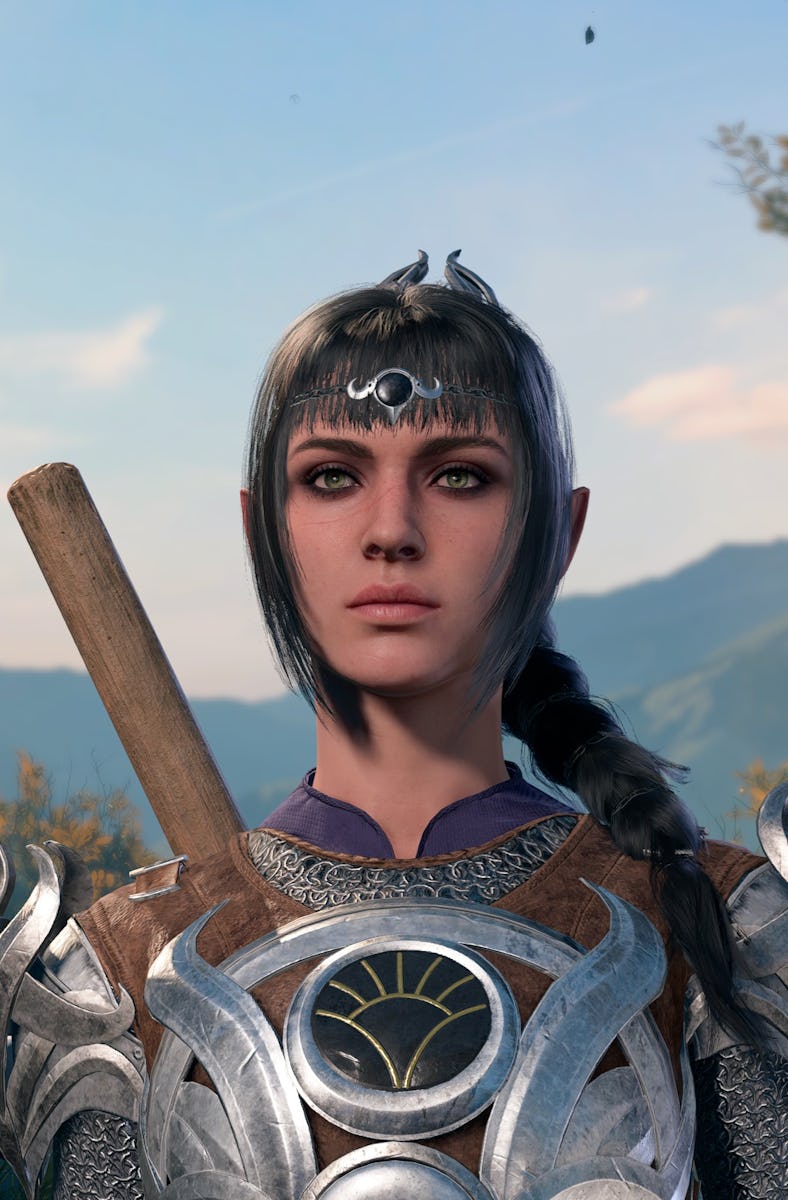Revisiting Baldur’s Gate 3 With A Way Better Graphics Card Changed Everything — Or Did It?
Better-looking eyelash batting.

When I first played Baldur’s Gate 3, two long years ago, it tested the limits of my gaming rig. Running a 2016 Nvidia graphics card — well regarded on its release and lauded as a speedy beast — I was able to make it through but cinematic moments stuttered every other second, and my queen, Shadowheart, occasionally froze in place. It didn’t really matter. The story was clear enough and the lag didn’t detract from how well-written the characters were and the multi-faceted ways you could interact with this fantasy world. I managed to make it to the game’s final act in one piece, with a full appreciation of how many hours I had sunk into flying around the lands, charming unsuspecting NPCs and talking to cows.
My copy of Baldur’s Gate was just beginning to collect dust when Nvidia sent us the new GTX 5090, an upgrade almost a decade in the making. Even though Baldur’s was the 2023 Game of the Year, fans are still getting on the bandwagon in 2025. It’s a game with staying power for the story. But do better graphics make it even more robust? How do the elves and fiends look now with AI-powered DLSS enabled?
Mizora in Baldur’s Gate 3.
Favorite games stick with us forever. As time passes, the games that stick with us are inevitably more about the game play than the graphics. The first Spider-Man game might have blown you away graphically, but it looks downright plebeian compared to Spider-Man 2. So what? You loved it for the swinging — and the story. But what happens when you revisit the game with way, way better capabilities? Does it change for the better thanks to all those new shiny details or for the worse, slipping into the uncanny valley? The Fast Past series is our attempt to answer these questions. So, with a shiny new graphics card or next-gen console we fire up a favorite for a loving revisit of our personal classics.
How much of an upgrade this really feels like depends on what you’re used to. If you’ve already got a graphics card from the last few years, it’ll be tough to see an appreciable difference between generations. The real improvement I saw jumping from a 1060 card to a 5090 is that the game stopped lagging on me and began to run smoothly. I could finally see the textures and shading on characters, and the impressive shadows and lighting now flickered back and forth instead of the old awkward halted movements.
The Nvidia GTX 5090 besides a screenshot of Shadowheart during one pivotal scene.
Baldur’s Gate 3 is a sincerely visual game — something that this new graphic card drove home for me in a way I had not appreciated before. With a graphical revisit, it’s like one of the companions gaining a new legendary item and unlocking untold powers. It feels like putting on a clearer pair of glasses to see everything with — I could have made out the shapes before and guessed out how many fingers the characters were holding up, but it used to be a lot more challenging. I now better understand the complaints about the few places where the story is told without images. I feel for the players who were quick to complain of how the ending appears rushed.
Here’s the thing: Baldur’s Gate 3 is still mostly playable on an ancient gaming PC setup. At its core, this is a game for lovers of storytelling. There are impressive graphics, sure, but this is not the kind of blockbuster that drives the masses to upgrade their PCs to get the most of it. Once the story gets going, I care more about whether I’ve successfully romanced Shadowheart than what the screen resolution is. Spoiler: I did not, and that thought still haunts me more than any amount of lag or PC performance issues because it just might mean that Baldur’s Gate 3 is still not done with me.